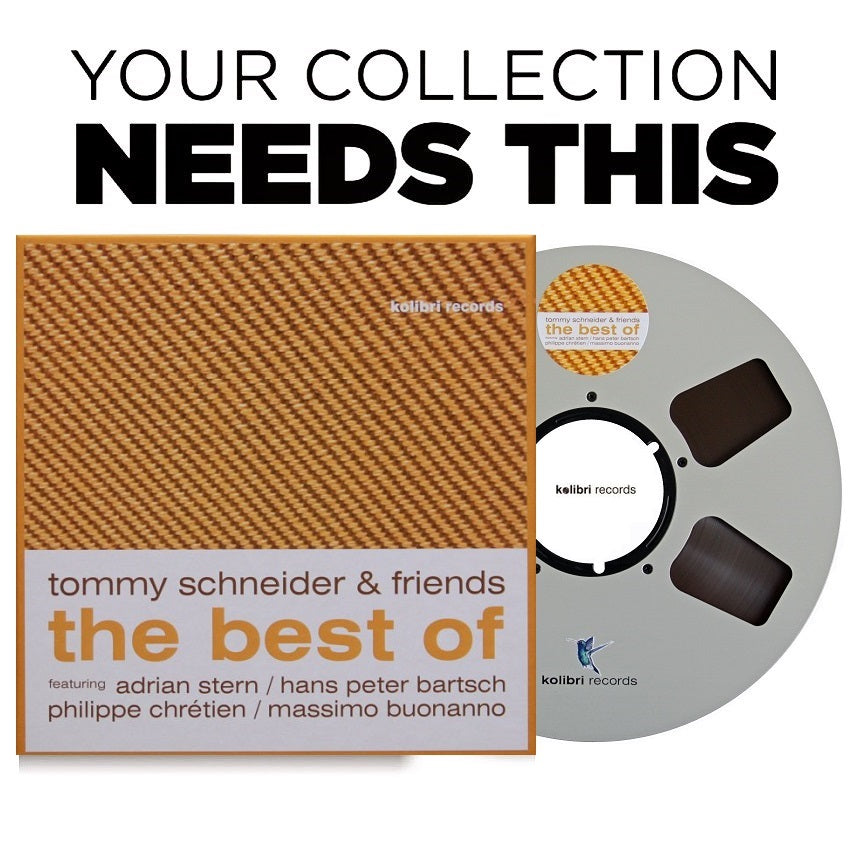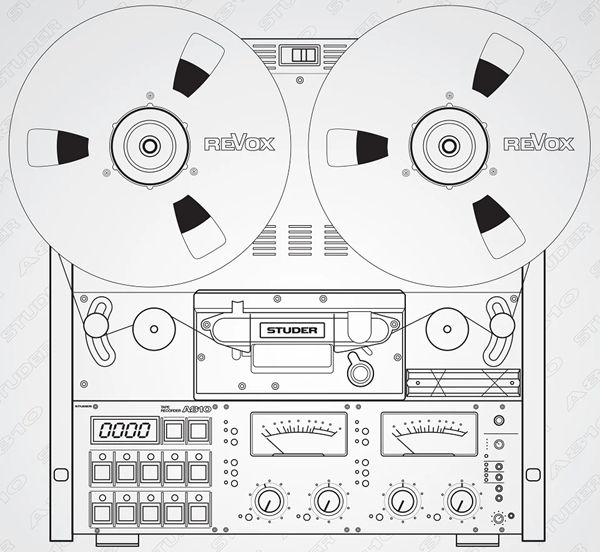The ultimate reel-to-reel tape is the latest retro-trend for audiophiles, it has the greatest dynamic range, is capable of producing extraordinary sound for the treble and bass and there is less signal processing which is the enemy of a hi-fi extraordinaire. Listening to music on reel-to-reel tape will allow you to discover details in the music you were never able to hear before.
To help you obtain the best results from these remarkable recordings a few details are given below.
Care of Audio Reel Tape - Guide to the Care and Handling of Magnetic Tape
- Tape should be handled only in no smoking, no food, and clean areas.
- Do not let tape or leader ends trail on the floor.
- Do not drop or subject to sudden shock.
- Keep tape away from magnetic fields. Don’t stack tapes on top of equipment.
- Tape storage areas should be cool and dry. Never leave open reel or cassette tapes exposed to the sun.
- Avoid subjecting tapes to rapid temperature changes. If storage and operating area temperatures differ by more than 15° F (8° C), allow an acclimatization time within the operating area of four hours for every 18° F (10° C) difference.
- Store open reel and cassette tapes with the reels or tape packs vertically. Reels should be supported by the hub. [Tapes should be stored like books on a library shelf – on end. They should not be stored lying flat.]
- Use high-quality reels or cassettes, boxes/containers, and accessories.
- Return tapes to their containers when they are not in use.
- Cut off damaged tape or leader/trailer ends from open reel tapes.
- For open-reel tapes, use protecting collars if available.
- Do not use general-purpose adhesive tapes to secure the tape end or for splicing. If necessary, use adhesive products designed for the purpose.
- Minimize tape handling.
- Do not touch the tape surface or the edge of the tape pack unless necessary and then wear lint-free gloves.
- Clean the recorder tape path thoroughly at the recommended intervals.
- Discard tapes with scratches or any other surface damage, which causes significant debris to be left in the recorder tape path.
- Ensure tapes to be reused are thoroughly bulk-erased before they are put back into service.
KEEP THE TAPE CLEAN
Cleanliness is important because minute debris can cause loss of reproduced signal by disturbing the intimate contact necessary between the tape surface and the reproducing head.
Store and use reel audio magnetic tape in a clean, smoke-free, food-free environment. Avoid contamination with dirt, dust, fingerprints and airborne pollutants. Cleanliness is important because minute debris can reduce the quality of replay by interfering with the intimate contact necessary between the tape’s surface and the playing head (and if you’re recording, the same principle applies).
Don’t use tapes with any wrinkling or surface scratches, or with nicked or dented edges or other impairments, as they will leave behind debris that risks damaging both your tape deck and other tapes. Cut off any damaged leader/trailer ends.
AWAY TAPE MAGNETISM
This is less of a problem than often thought. Devices such as walk-through metal detectors use small fields that have absolutely no effect. Hand-held detectors are best avoided as high local fields may be present. X-rays do not affect unrecorded or recorded tapes. Similarly, radiation from radar antennas can be disregarded, unless the field strengths are sufficient to injure people. Some detectors used to screen luggage in airports use powerful magnetic fields that may partially erase recorded information on tapes. These devices are used in some European airports.
It is prudent to keep tape away from transformers, heavy electrical machinery, [and other very strong magnets]. Magnetizing forces of the order of 500 A/m and above can cause partial erasure and/or increased print in the case of recorded tape. Such fields may put low-frequency (LF) noise on unrecorded tape. This can be removed by bulk-erasure. The risk of increased print through applies to alternating fields that can act as a bias, encouraging layer-to-layer printing.
Magnetic field problems are very rare, even for tapes shipped internationally without special precautions. The best protection for shipping is a minimum of 50 mm [2 inches] of nonmagnetic material all around. The inverse square law ensures that the fields from even heavy electrical equipment will not affect tape at 50 mm [2 inch] distance. Metallic boxes and foils offer no useful protection against stray fields but may help exclude adverse environments.
TAPE HANDLING
Tape in the library box provides good protection for the tape inside. Tape should be returned to their library boxes for additional protection when not in use.
The protection offered by reels can be improved if wrap-around collars fitting around or between the flanges are used. Such collars prevent the flanges from deflecting and pressing against the edge of the tape; they also help exclude dust and retain the tape end, avoiding the risk of contamination with glue from unsatisfactory retaining tabs.
TAPE TAILS OUT
The term tape tails out is used to reference which way a tape has been wound. Heads out is when a tape has been rewound onto the supply reel and tails out is when a tape has been wound onto the take-up reel. It is considered best practice to store tape tails out because of a process called “print-through,” which is the process by which the magnetic flux of the tape slightly alters or prints on the layer below. The imprint can create a “pre-echo” for heads-out tape storage or a “post-echo” for tails-out tape storage. Post-echos are much harder to detect so it is recommended that tapes be stored tails out.
PROTECTING YOUR TAPES
Tapes can be damaged by drops and sudden jolts so adequate care should be taken when handling them. They should be stored away from magnets and electronics that can produce magnetic fields including speakers, and other equipment, particularly transformers and other strong magnets. Magnets are less of a danger to the tapes than previously thought but when talking about tape longevity even a small chance of harm should be avoided. Tapes should be stored in a cool and dry place and not exposed to direct sunlight. Shock, such as dropping the tape, should be avoided.
ALCHEMY TAPE SOUND
Rediscover Music On Reel Tape: The audio reel tape is now making a comeback in the world of music. As the highest quality medium for analogue recording and playback, magnetic tape technology has not only returned: after more than 30 years during which the technology was almost completely displaced by digital technology, it is now receiving the appreciation it deserves thanks to a small group of enthusiasts who are keeping it alive.
As a result, this technology occupies a whole new, special place among the various sound recording formats. For enthusiasts and audiophiles, this evolution is long overdue and is considered the analogue sound source par excellence.
Long Live Analog and Music On Audio Tape.








